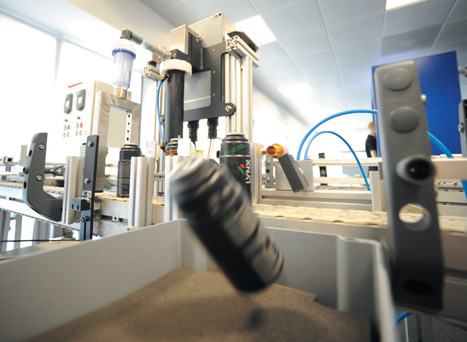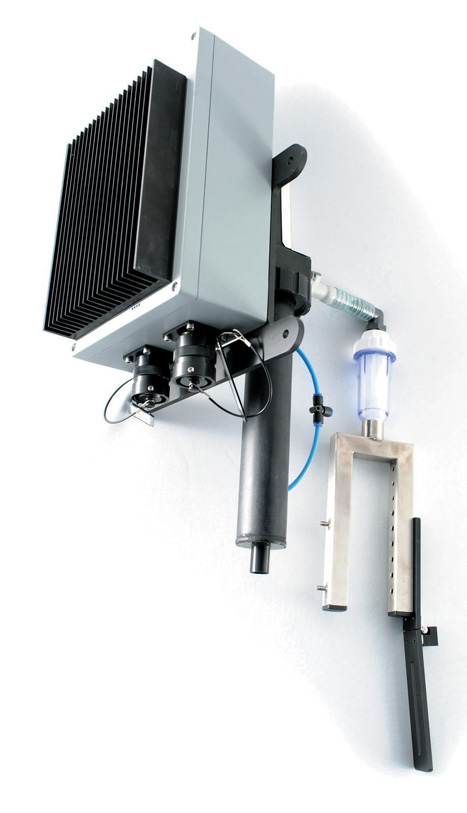International transport regulations demand that manufacturers of aerosol sprays rigorously check their products to ensure they are not leaking before they are transported to customers.
However, as manufacturers introduce production lines that are capable of producing cans at faster rates, many conventional automated solutions can no longer match the speed of the inspection process.
Now, thanks to the use of its own proprietary patented Quantum Cascade Lasers-based technology, Scotland-based Cascade Technologies has developed a number of systems that can be used for the detection, measurement and monitoring of gases in industrial processes and industrial emissions.

More important for aerosol manufacturers is the company’s recently introduced CT2210 micro leak detector, which makes use of the novel laser technology to identify aerosol cans that are leaking propellants, such as propane and butane, as they travel along a conveyor belt at a rate of 500 cans per minute.
According to Richard Cooper, commercial director of Cascade Technologies, the system itself performs three important functions sampling the gas around each canister, measuring whether or not any leaking gases are present and then signalling any cans that are deemed to be leaking.
To sample the gas, the company developed an adjustable mechanical archway that sits over the aerosol production line. As the cans pass under the arch, gas from around the can is drawn through a series of small holes on the two vertical struts of the arch. After travelling though a filter, the gas is drawn into a sample cell. While in the cell, the gas is exposed to pulses from a laser light in the mid-infrared spectrum. The
laser beam bounces multiple times on mirrors in the cell before returning to a detector that produces an analogue signal representative of the spectrum of the sample.
The averaged signal is then passed to the software, which analyses the digitised spectrum to identify the spectroscopic peaks in the sample. To do so, a processor runs a fitting algorithm over the spectrum produced by the sample of air that has been captured to determine whether or not butane and propane may be present.
’The amplitudes of the propane and butane in the sampled spectrum represent known concentrations of the gases in the sampled air, and if they are over a certain threshold, they indicate a leaking canister. If the system detects such concentrations, a signal is provided that triggers the system to eject the can from the line,’ said Cooper.
The system is able to determine specific gases in complex mixtures
Applying a pulse of current to the laser for up to hundreds of nanoseconds at a time causes instantaneous heating of the device. This causes the physical dimensions of the laser structure to change minutely, and as they do so, the laser produces a chirp.

This chirp of mid-infrared light includes the spectrum of the gases in the cell and by using a fitting algorithm, the gas concentrations can be determined. The laser can maintain this property as it is cycled through thousands of heating and cooling cycles during its operation.
Cooper said there are key advantages to using a system that uses Quantum Cascade Lasers.
First, they operate in the mid-infrared, rather than the near or far infrared. Butane and propane, the key propellant gases in aerosols, along with most other gases have their primary absorptions in the mid-infrared region. These absorptions are typically 100 to 1,000 times greater in the mid-infrared compared to the near infrared.
Second, the resolution of the system is such that it is selective enough to determine specific gases in complex gas mixtures.
Cooper said that since the system had been introduced last year at one of the UK’s largest aerosol manufacturers, it had been operating effectively on a production line inspecting aerosol canisters at a rate of 500 per minute. At that rate, the technology will have been singularly responsible for ensuring the safety of more than 100-million cans of aerosol spray.




Glasgow trial explores AR cues for autonomous road safety
They've ploughed into a few vulnerable road users in the past. Making that less likely will make it spectacularly easy to stop the traffic for...